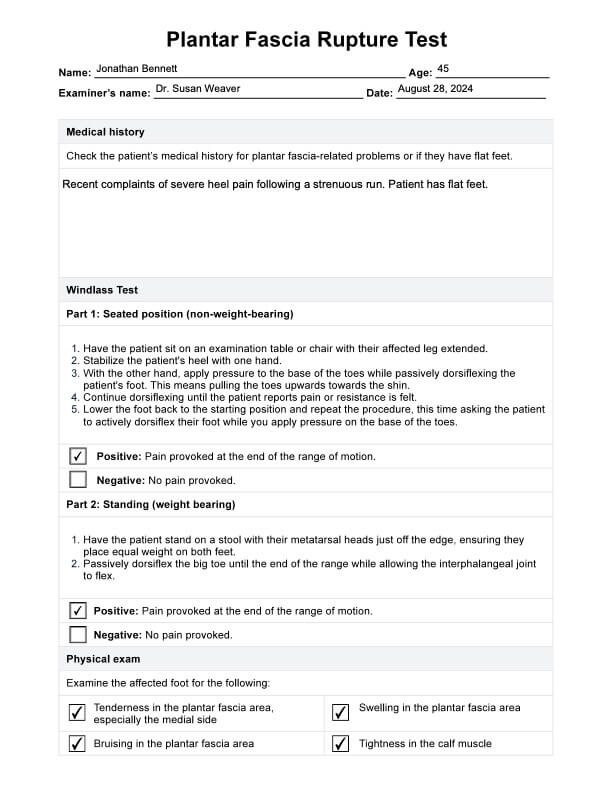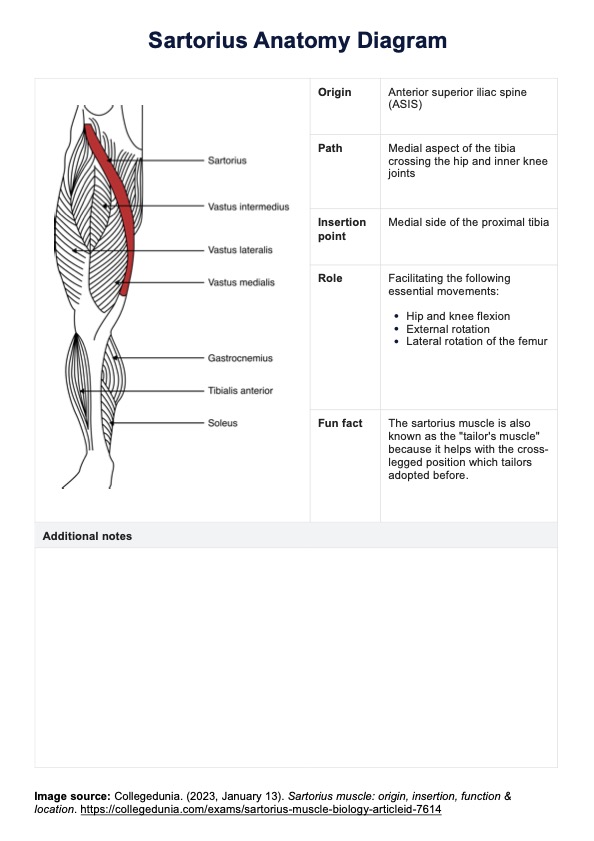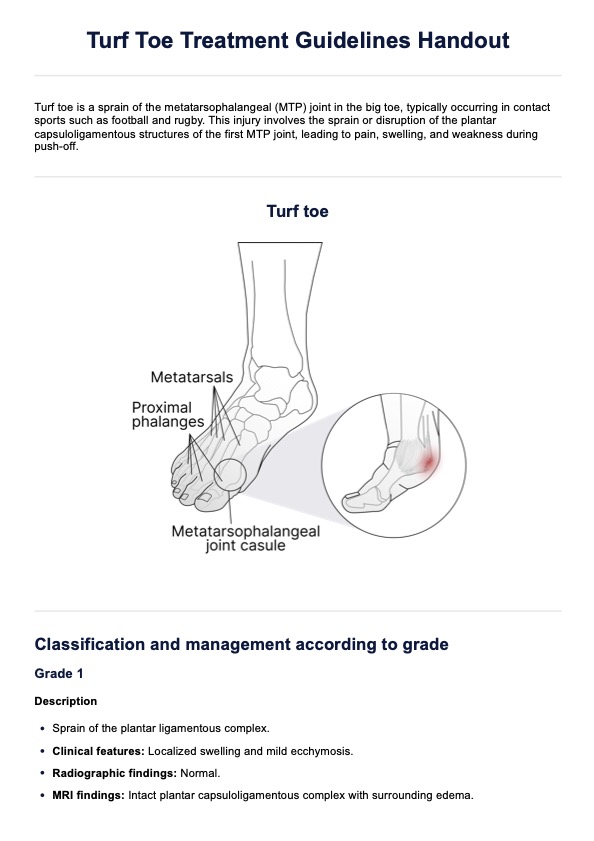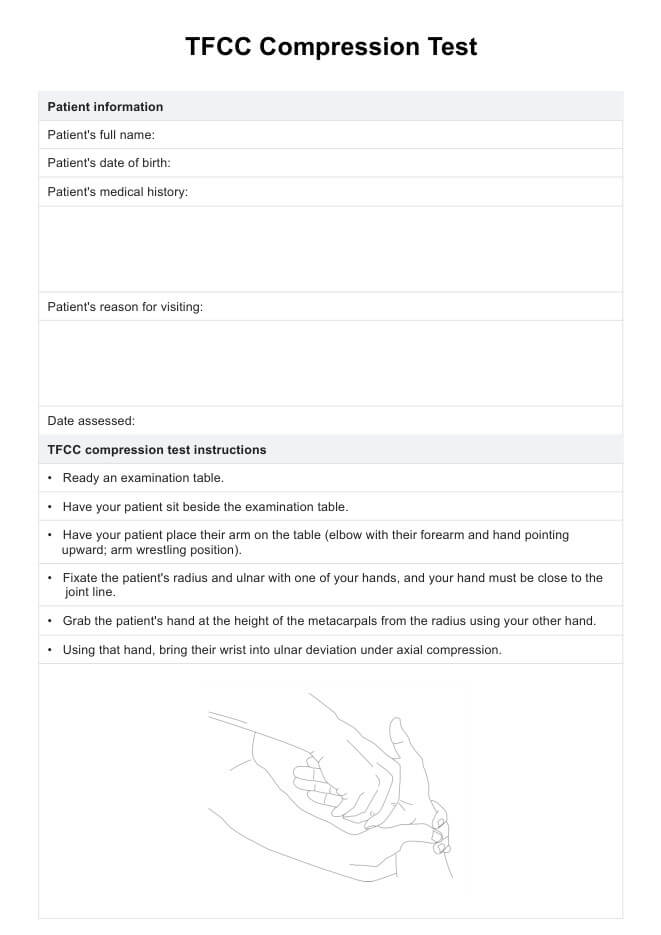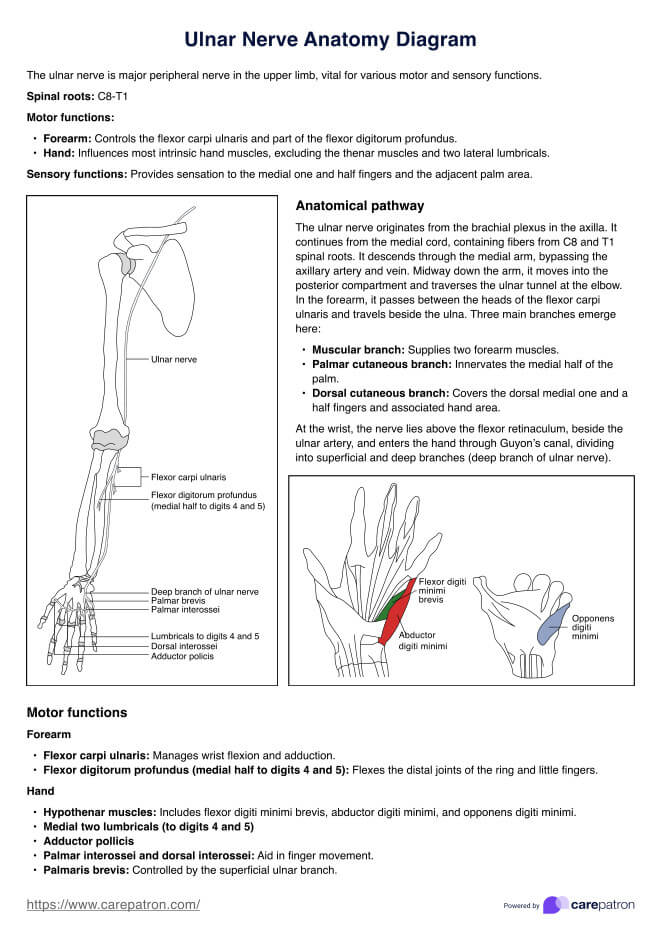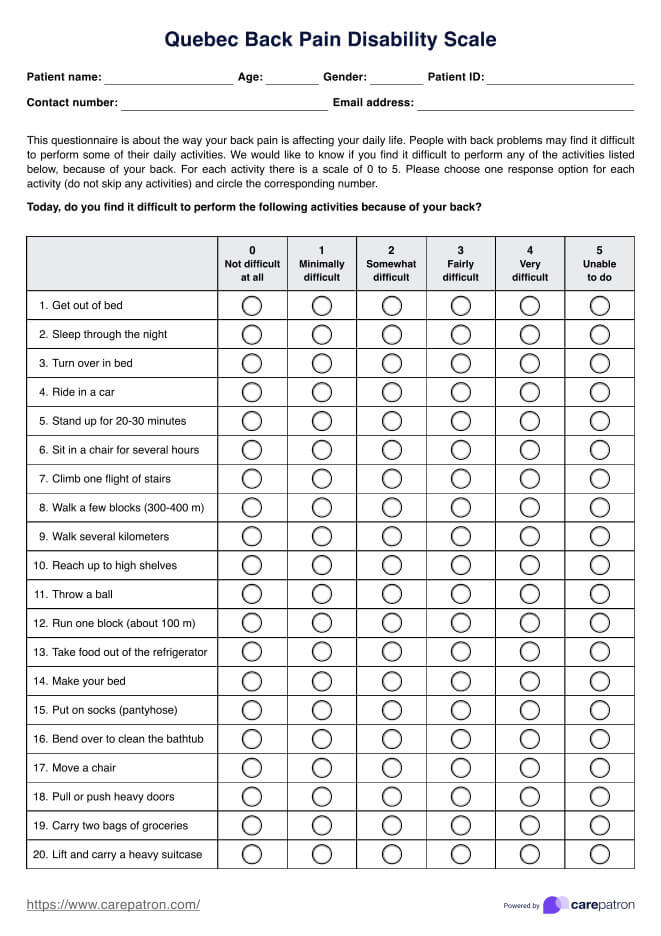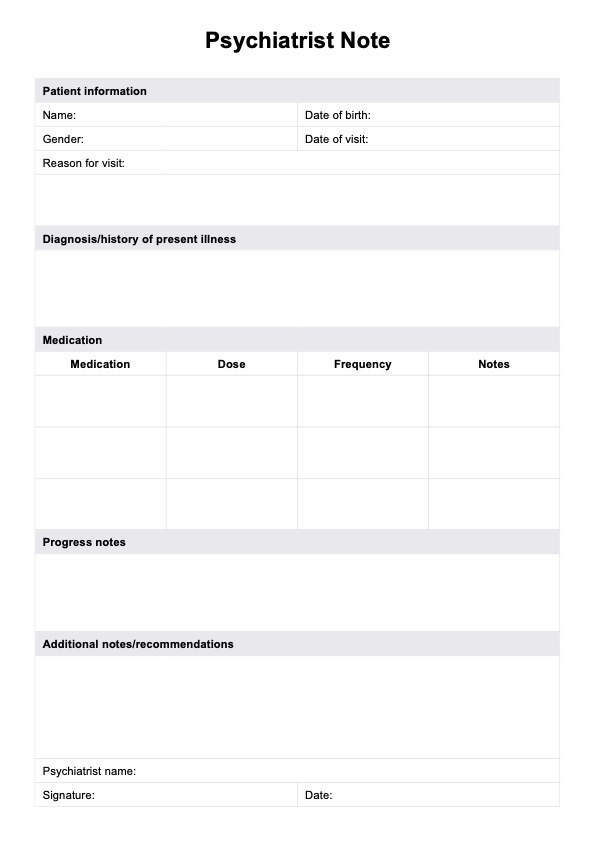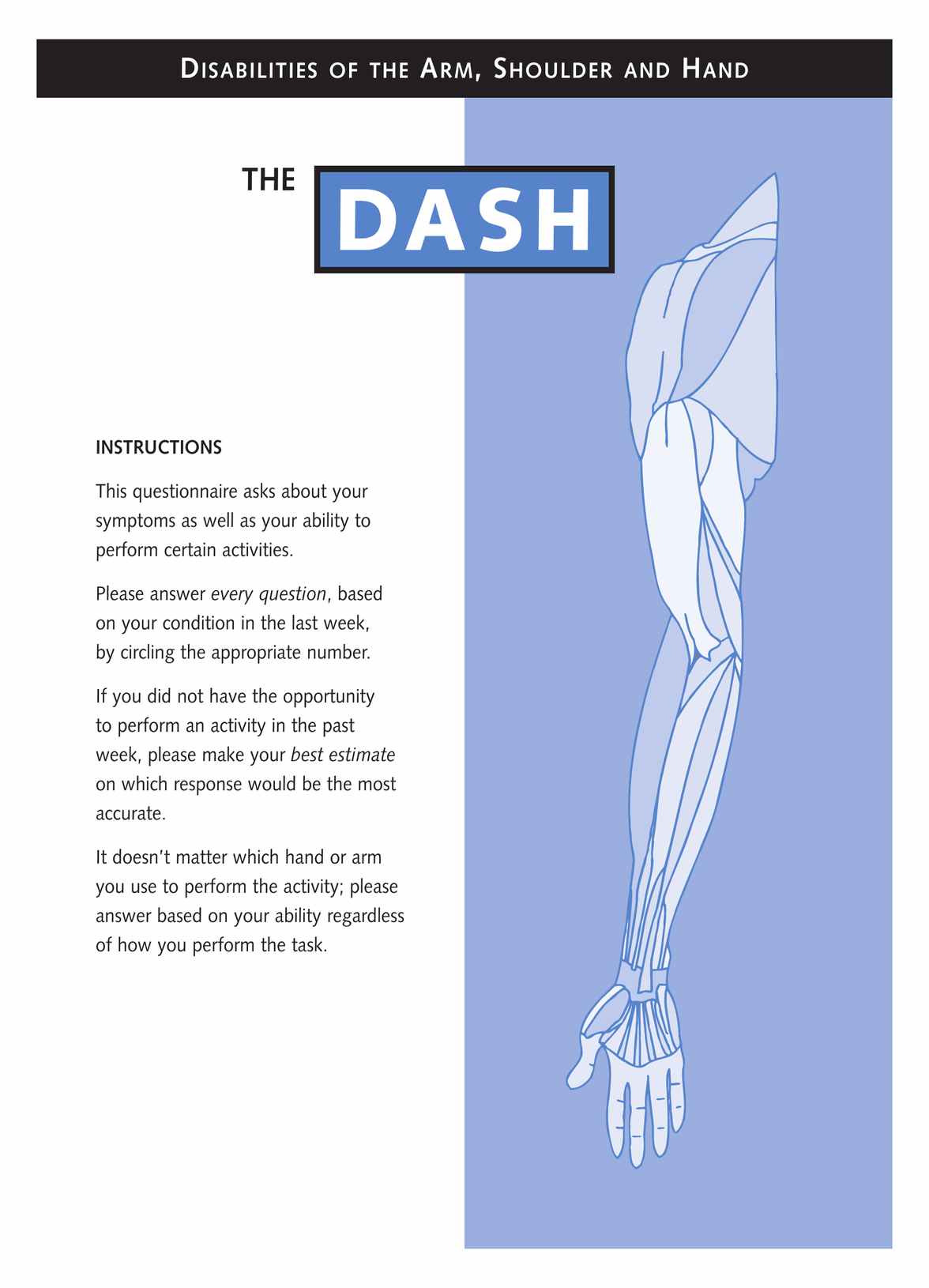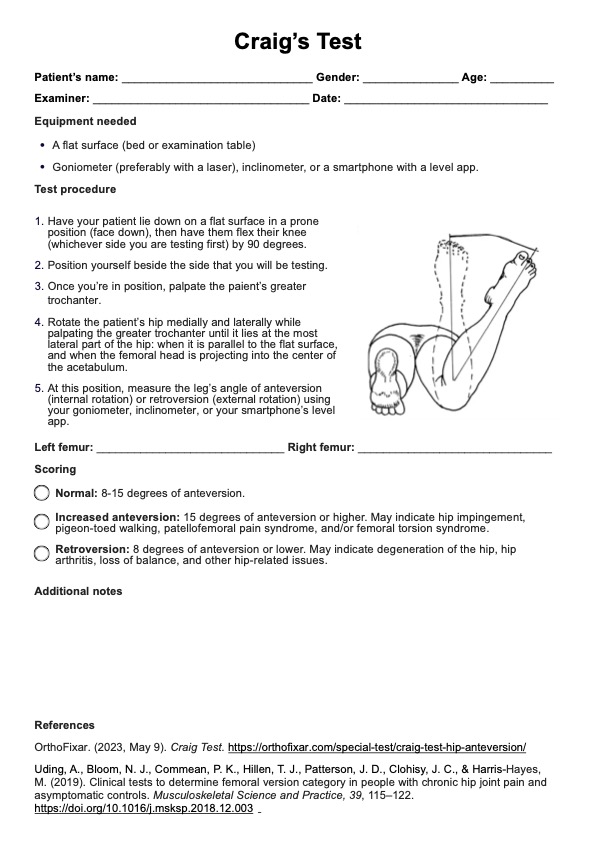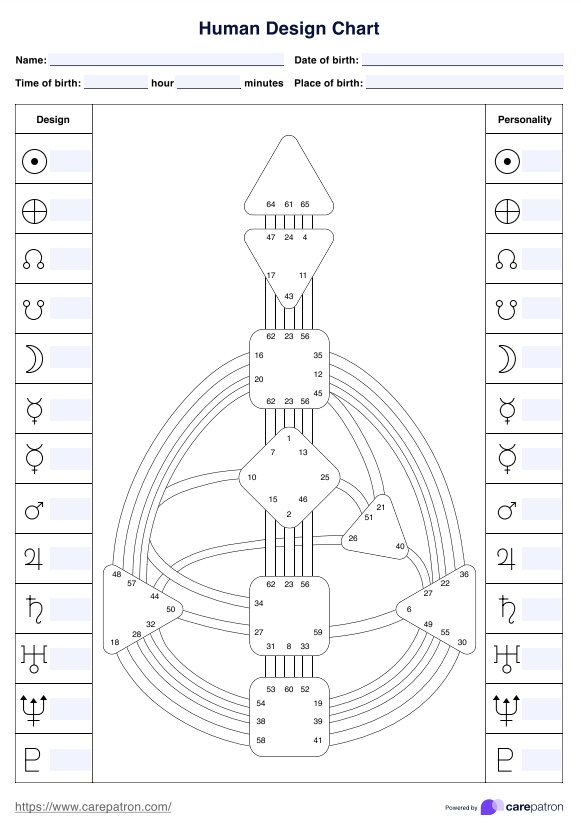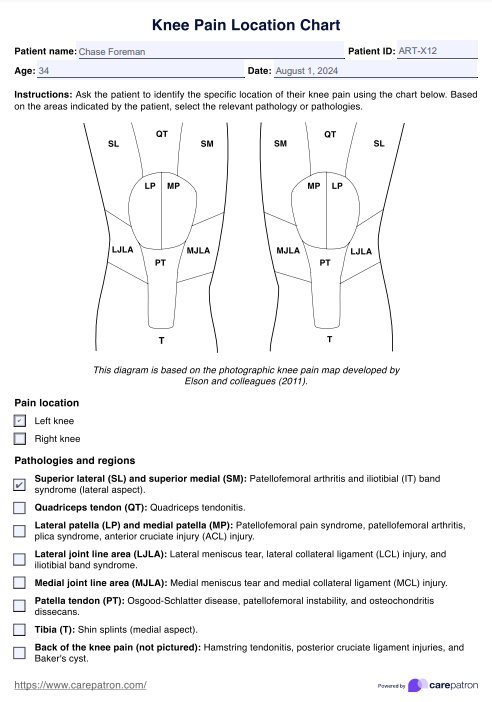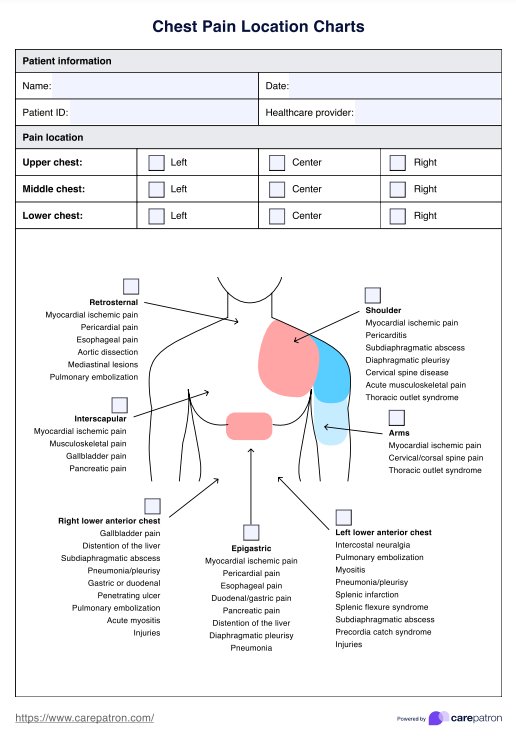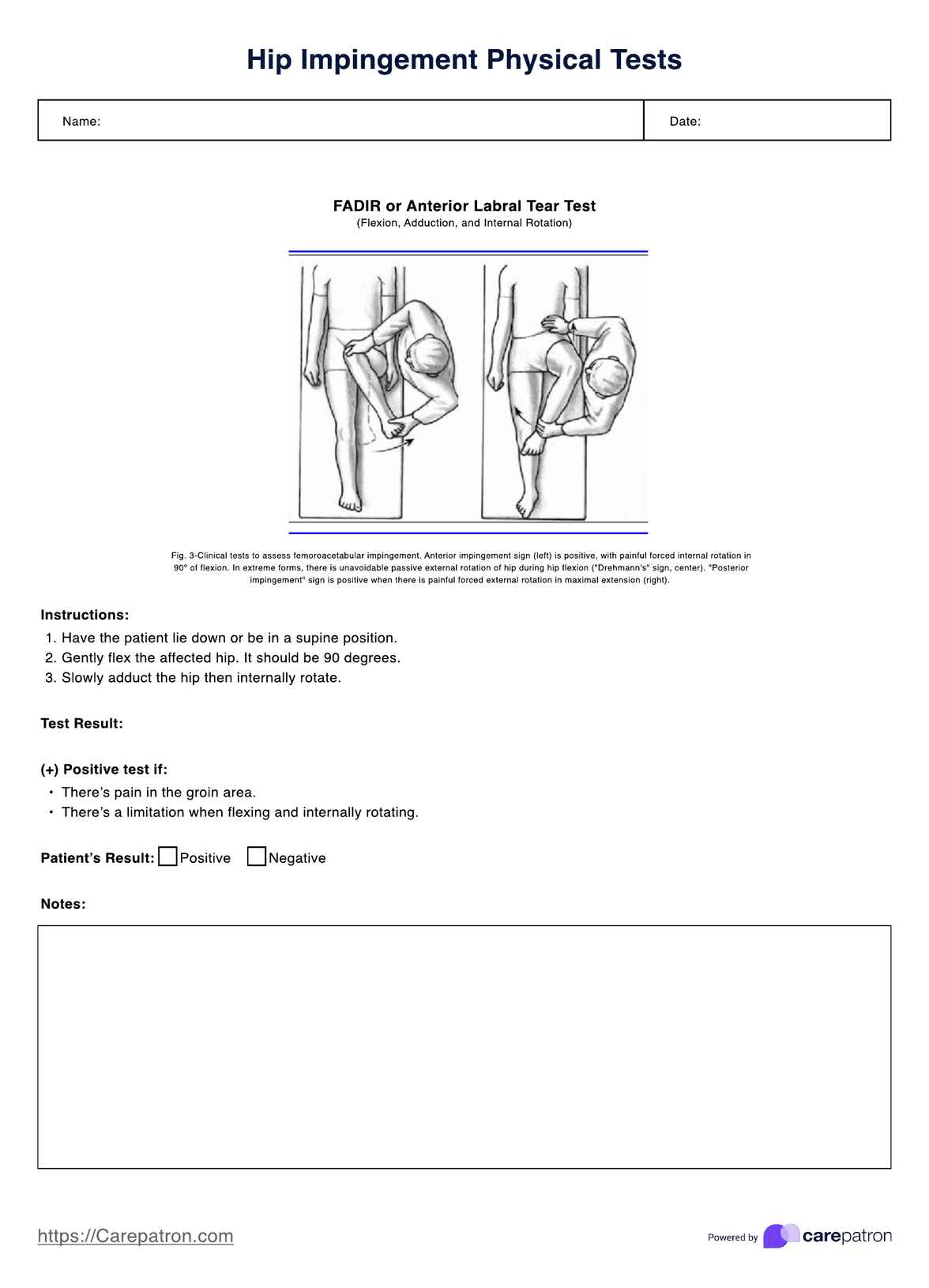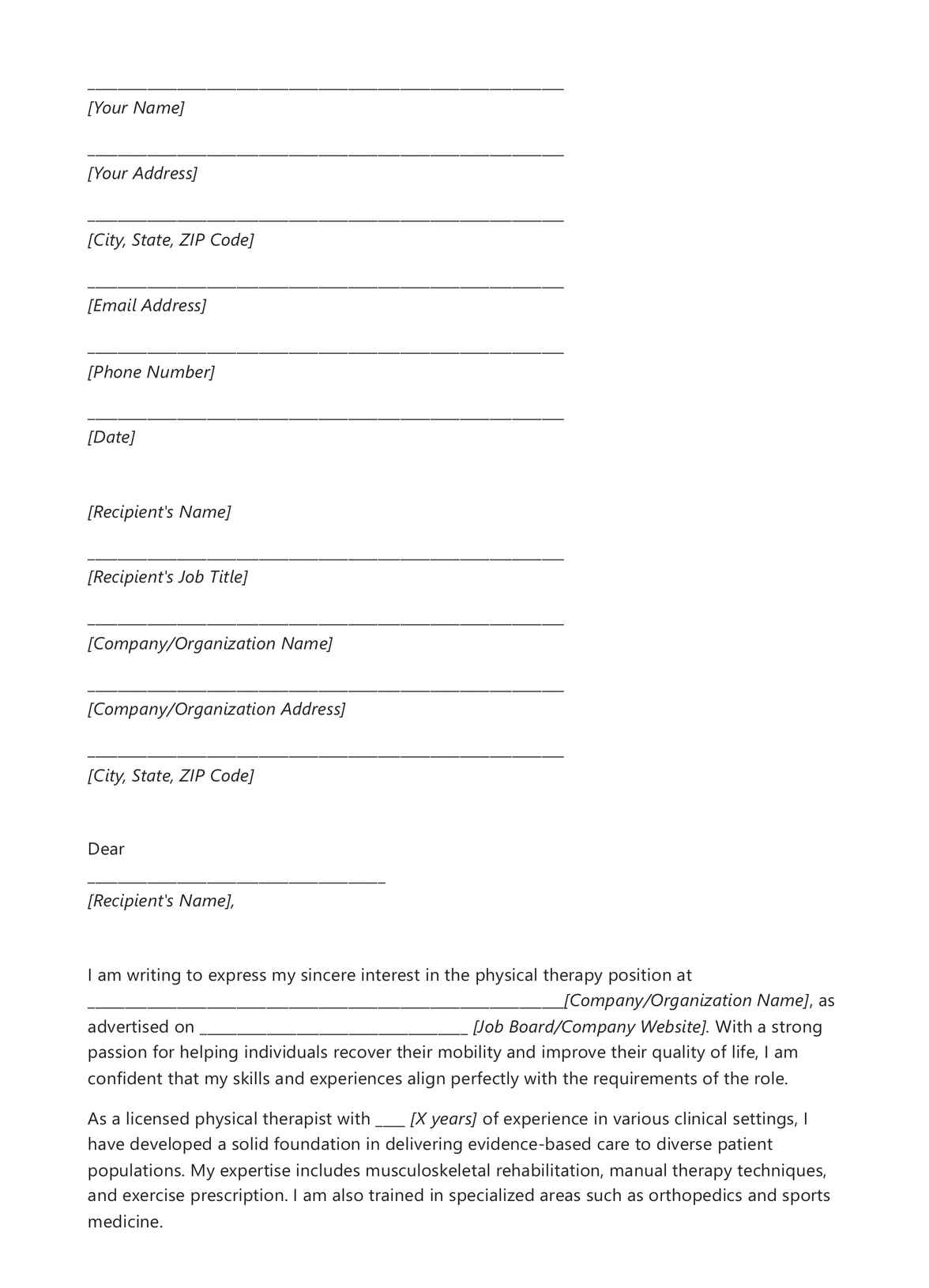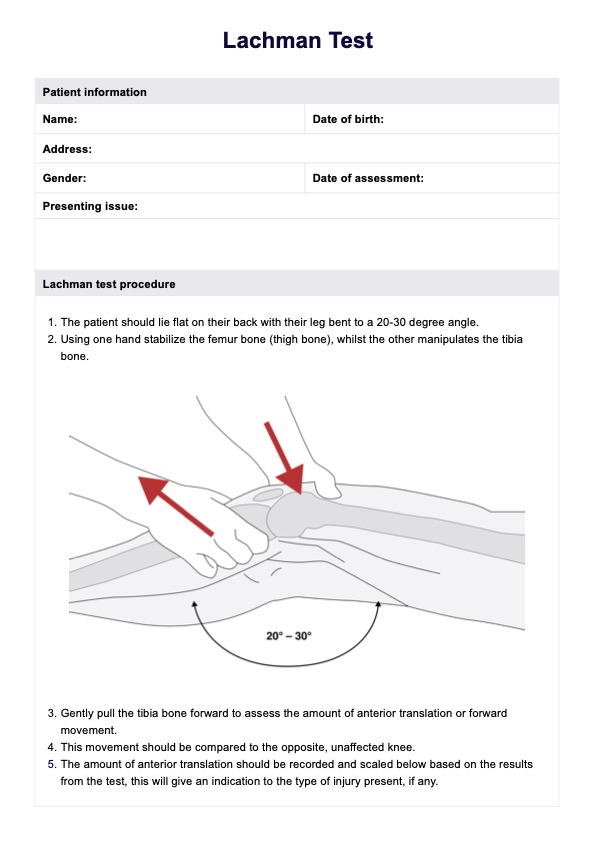Plantar Fascia Rupture Test
Conduct the Plantar Fascia Rupture Test to check if your patient has a torn or ruptured plantar fascia.


What is the plantar fascia?
The plantar fascia is a part of the foot that serves as a shock absorber. It also supports the arch of a foot by bearing our full weight whenever we stand, walk, and run. As with all things that bear weight, this body part has its limits and may weaken at a certain point, especially if you're on your feet the whole day—whether for work, sports, or leisure.
With enough strain, your plantar fascia might get irritated or damaged. When this happens, you might develop something called plantar fasciitis, a condition considered one of the most common causes of foot pain and chronic heel pain. If you have plantar fasciitis, you will likely feel a prickling or stabbing sensation in the arch of your foot. Your foot will feel stiff. Your heel will likely swell, and whenever you take a step, you will feel like something's biting or clamping your heel.
Another possible result of an irritated or damaged plantar fascia is a plantar fascia rupture or tear. This problem is uncommon. It is an acute type of pain that may emerge when performing an athletic or kinetic activity. Heel pain caused by a plantar fascia rupture feels like a sharp pain, like something is tearing up or stabbing the sole of the foot. After the rupture, swelling will start to occur, and they will likely talk about a localized type of pain. After a few days, there will be bruising and tenderness in the area.
Plantar Fascia Rupture Test Template
Plantar Fascia Rupture Test Example
How to perform the Plantar Fascia Rupture Test
To check for a plantar fascia tear, you'll have to conduct a series of tests that will confirm if it's a plantar fascia rupture or plantar fasciitis. They're not the same. In the context of this guide, the Plantar Fascia Rupture Test is a series of tests that account for the possibility of it being Plantar Fasciitis.
Here's how it'll go:
- Check the patient's medical history to see if they have a history of flat feet, plantar fascia rupture, or plantar fasciitis.
- Conduct the Windlass Test first. This test is used to determine the possibility of plantar fasciitis. While plantar fascia ruptures and chronic plantar fasciitis are different, they share some similarities, so it's best to eliminate other possibilities.
- You should next check for tenderness, bruising, and swelling in the plantar fascia area, noting if the tenderness is on the medial side. You should also check for tightness in the calf muscle, which is a sign of a ruptured plantar fascia.
- The last thing you should do before diagnosing a patient is conduct imaging tests to rule out or confirm other conditions, such as plantar fasciitis.
When is it best to conduct a Plantar Fascia Rupture Test?
The best time to conduct it would be when a patient presents themselves to you for a scheduled appointment and discusses foot pains. When checking the foot, if you notice any bruising on the sole of the foot, especially in the Plantar Fascia area, there's a good chance of a tear. Still, it's best to physically examine the affected foot first. This is so you can check for the possibilities of other Plantar Fascia-related problems that might be present.
Also, before you conduct this test, it's best to tell them what will happen and what particular tests will be conducted overall. This template includes an imaging test as part of the series. These tests are expensive, so it's best to inform the patient beforehand so they can decide whether to proceed. They have the right to know and to decide, so you shouldn't surprise them with a sudden imaging test.
It's also best to conduct this test even if there is no bruising yet. Bruises might only appear days after the rupture first occurred, so having your patient undergo the tests is ideal so that you can detect as early as possible what specific Plantar Fascia problem they have, and if it's a rupture, you can immediately see if it's partial or complete.
What are the benefits of using this Plantar Fascia Rupture Test template?
It reminds professionals about what they should be checking.
The great thing about this template is that it provides reminders to thoroughly check a patient's plantar fascia because plantar fascia tears are rare and similar to plantar fasciitis. Simply palpating the foot isn't enough and shouldn't be the sole basis for determining the problem. That's why the test template we have tells you to check the patient's history (if they have a history of plantar fascia-related problems); to conduct the Windlass Test to account for the possibility of plantar fasciitis; to check for tenderness, swelling, and bruises; and conduct an imaging test to correctly confirm everything. It provides a structure that lets you make a proper diagnosis and is the first step to resolving the issue.
It can be used to record findings.
The template we made for the Plantar Fascia Rupture Test comes with comment boxes. These boxes allow healthcare professionals to note their observations while conducting all the tests. This is an excellent way to record findings and share them with other members of the patient's care team. The findings can help inform others so they can decide what particular tests should be conducted.
Some segments of the template can be reused when monitoring patients.
During the patient's recovery from a torn plantar fascia, you can conduct these tests again to see if the tear's characteristics remain. If they do, you might want to give whatever treatment plan you implemented more time to see if it works. If they get better and their foot starts to become normal again, you can safely assume your plan is working. If not, you might want to make changes and see if they do the trick.
Commonly asked questions
You may suspect a plantar fascia rupture if you experience sudden, sharp pain in the arch or heel bone of your foot, often accompanied by a popping sound at the time of injury. Other signs include swelling, bruising, and difficulty bearing weight on the affected foot, making it essential to seek a medical evaluation for a definitive diagnosis through physical examination and imaging tests like MRI or ultrasound.
Walking on a ruptured plantar fascia is generally not advisable, as it can be extremely painful and may exacerbate the injury. Most individuals will experience significant discomfort and difficulty bearing weight on the affected foot, necessitating the use of crutches or a walking boot for support and protection during the healing process.
Treatment for a partially torn plantar fascia typically begins with rest, ice, and immobilization using crutches or a walking boot to reduce strain on the fascia. As healing progresses, physical therapy may be introduced to improve flexibility and strength, and custom orthotics can help alleviate tension; full recovery can take several weeks to months, depending on the severity of the tear.



